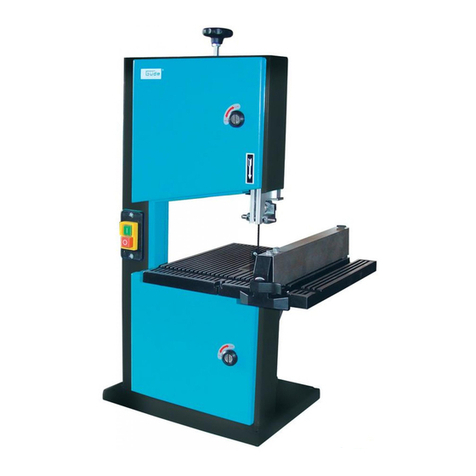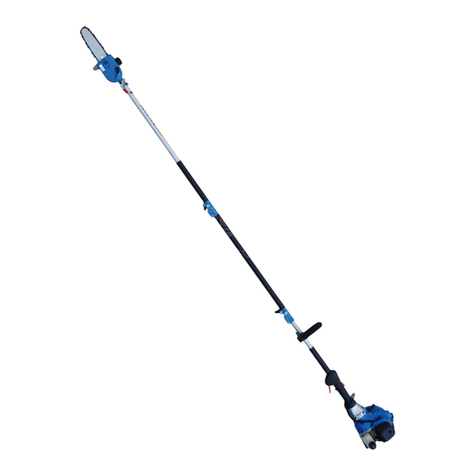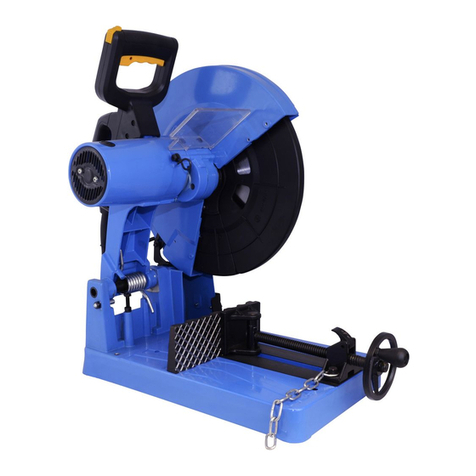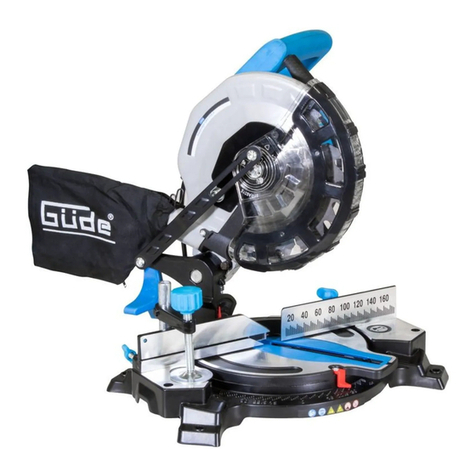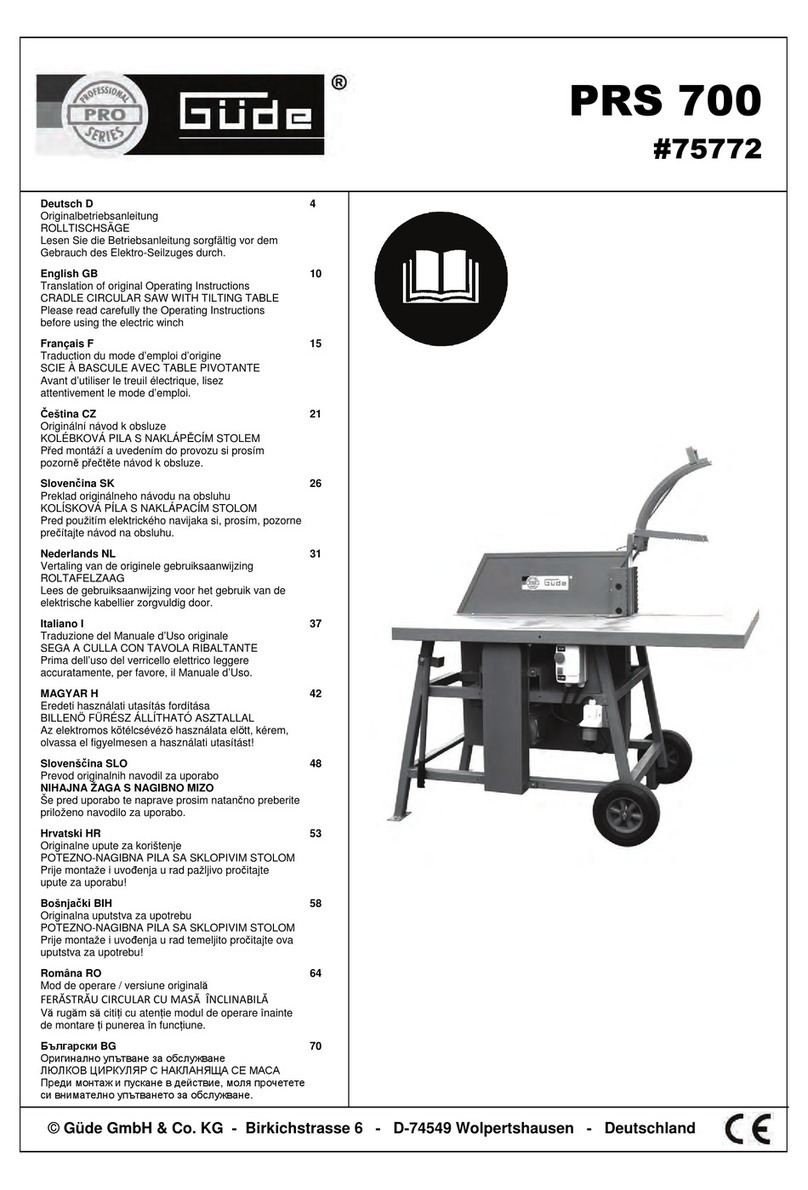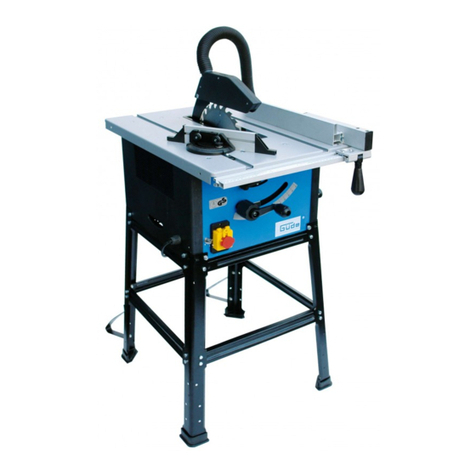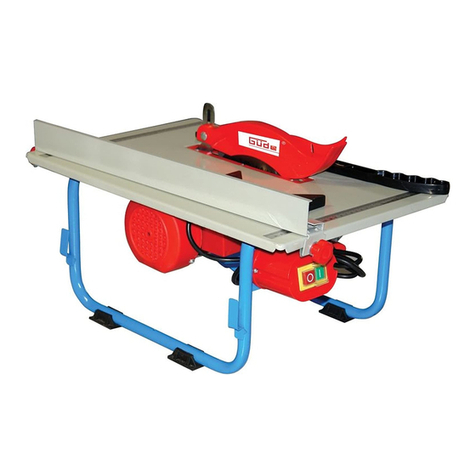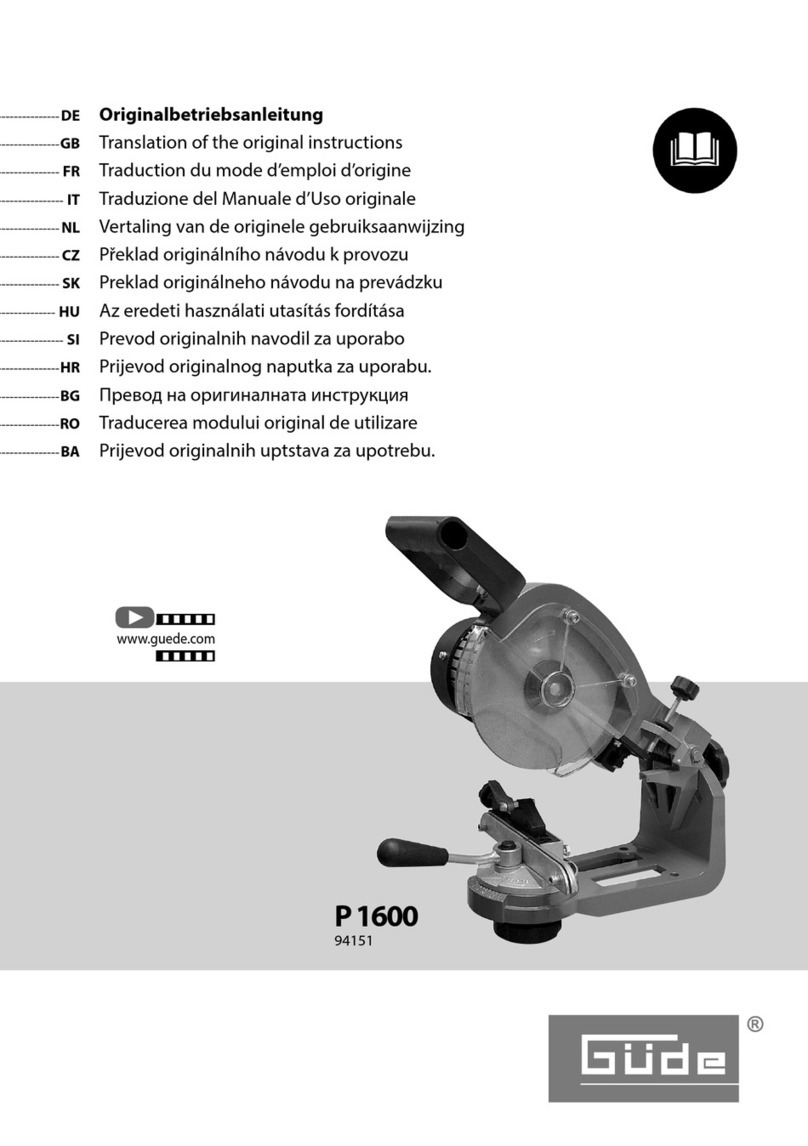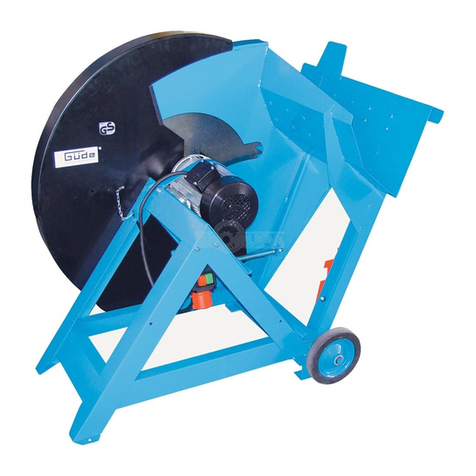
Maschine von Stromversorgung trennen
Ziehen Sie den Netzstecker vor allen Einstell- und
Wartungarbeiten.
Vermeiden Sie unbeabsichtigtes Anlaufen
Vergewissern Sie sich, dass der Schalter auf AUS steht,
bevor Sie den Stecker ziehen.
Verwenden Sie empfohlenes Zubehör
Befolgen Sie dem Zubehör beiliegenden Anweisungen .
Die Verwendung von ungeeignetem Zubehör kann
gefährlich sein.
Niemals auf der Maschine stehen
Schwere Verletzungen können die Folge sein, falls die
Maschine umkippt oder das Schneidwerkzeug
versehentlich berührt wird. Lagern Sie kein Material so
über oder neben der Maschine, dass man auf sie
steigen muss, um es zu erreichen.
20. Prüfen Sie auf beschädigte Teile
Vor jeder Anwendung sollten alle Schutzvorrichtungen
und sonstige Teile sorgfältig geprüft werden, um zu
sehen ob es seine Funktion noch erfüllt. Prüfen Sie auf
Ausrichtung, Leichtgängigkeit, Bruch oder sonstige
Schäden die sein Funktion beeinträchtigen können. Ein
beschädigtes Teil sollte umgehend fachgerecht repariert
oder ersetzt werden.
Maschinen nicht unbeaufsichtigt laufen lassen
Gerät ausschalten und erst verlassen, wenn das
Werkzeug zum Stillstand gekommen ist.
Das Gerät erfüllt die Anforderungen der EN 61000-3-11
und unterliegt Sonderanschlußbedingungen. Das heisst,
dass eine Verwendung an beliebigen frei wählbaren
Anschlusspunkten nicht zulässig ist.
Das Gerät kann bei ungünstigen Netzverhältnissen zu
vorübergehenden Spannungsschwankungen führen.
Das Gerät ist ausschließlich zur Verwendung an
Anschlußpunkten vorgesehen, die eine maximale
zulässige Netzimpedanz von Zmax = 0,233 Ωnicht
überschreiten.
Sie müssen als Benutzer sicherstellen, wenn nötig in
Rücksprache mit Ihrem Energieversorgungsunter-
nehmen, dass Ihr Anschlusspunkt, an dem Sie das
Gerät betreiben möchten, die oben genannte
Anforderung erfüllt.
Gerätespezifische Sicherheitshinweise
Vorsicht:
Zu Ihrer eigenen Sicherheit gestatten wir den Betrieb nur,
wenn Sie die Säge, wie beschrieben, komplett montiert,
installiert und die Sicherheitshinweise gelesen und
verstanden haben.
Vor der ersten Benutzung zu beachten:
Montage und Einstellung
Kennen Sie die Funktion und die richtige Bedienung von
dem EIN/AUS –Schalter
oberer und unterer Schutzhaube
Sägewellenverriegelung und Grifftaste
Schrägverstellung des Sägekopfes,
Anschlagklammern und Drehtischverriegelung?
Lesen und verstehen Sie alle Sicherheitsinformationen
und Betriebshinweise in dieser Anleitung.
Beachten Sie die Warnhinweise auf der Kappsäge.
Vor jedem Gebrauch:
Überprüfen Sie Ihre Säge. Wenn irgendein Teil dieser
Kappsäge fehlt, verbogen oder sonstwie unbrauchbar ist
oder die Elektrik fehlerhaft ist, schalten Sie die Säge aus
und ziehen den Netzstecker. Ersetzen Sie alle
fehlenden, beschädigten oder fehlerhaften Teile, bevor
Sie die Säge wieder benutzen.
Planen Sie Ihre Arbeit so vor, dass Augen, Hände,
Gesicht und Gehör geschützt sind.
Tragen Sie eine Sicherheitsbrille, die den Anforderungen
der DIN Norm 58214 entspricht. Bei Gebrauch einer
Maschine könnten Fremdkörper in die Augen
geschleudert werden, dauerhafte Seestörungen können
die Folge sein. Sicherheitsbrillen erhalten Sie dort, wo
Sie Ihre Kappsäge erworben haben. Die Benutzung von
Schutzbrillen, die nicht der DIN Norm 58214
entsprechen, kann durch Bruch des Schutzglases zu
schweren Verletzungen führen.
Tragen Sie bei staubigen Arbeitsgängen zusätzlich zur
Schutzbrille eine Staubmaske.
Zur Vermeidung von Verklemmen des Sägeblattes in der
Schnittfuge oder Wegschleudern von Werkstücken:
Wählen Sie ein für den Schneidvorgang geeignetes
Sägeblatt. Sägen Sie mit dieser Kappsäge nur Holz,
holzähnliche Werkstücke oder weiches Metall wie z.B.
Aluminium-Profile.
Der Pfeil auf dem Sägeblatt, der die Drehrichtung
anzeigt, muss in die gleiche Richtung zeigen wie der auf
der Säge angebrachte Pfeil. Die Sägeblattzähne müssen
an der Vorderseite des Gerätes nach unten zeigen.
Vergewissern Sie sich, dass das Sägeblatt scharf,
unbeschädigt und richtig justiert ist. Drücken Sie, bei
gezogenem Netzstecker, den Sägekopf nach unten.
Drehen Sie das Sägeblatt mit der Hand und prüfen Sie,
ob es frei läuft. Kippen Sie den Sägekopf auf 45°-
Position und wiederholen Sie den Test. Hat das
Sägeblatt an irgendeiner Stelle Berührung, justieren Sie
den Sägekopf neu, wie im Abschnitt 6
„Arbeitsvorbereitung“ beschrieben.
Halten Sie das Sägeblatt und die Spannflächen der
Sägeblattflansche sauber.
Die Sägeblattflansche müssen immer mit dem
angedrehten Absatz nach innen (zum Sägeblatt hin)
montiert sein.
Die Seite der Flanschscheibe mit dem angedrehten
Absatz muss am Blattflansch anliegen.
Die Flanschschraube muss mit einem 13 mm
Steckschlüssel handfest angezogen sein.
Stellen Sie sicher, dass alle Spannvorrichtungen und
Verriegelungen fest sind und kein Teil ein zu großes
Spiel vorweist.
Niemals freihändig schneiden:
Werkstück stets fest gegen Anschlag und Tisch
halten, so daß es während des Sägens nicht wackelt
oder sich verdrehen kann. Unter dem Werkstück
dürfen sich keine Sägespäne ansammeln können.
Stellen Sie sicher, dass das Werkstück sich nach
dem Durchtrennen nicht bewegen kann (z.B. weil es
nicht vollflächig auf- oder anliegt)
Benutzen Sie zum Schneiden von nicht vollflächig
aufliegenden Werkstücken Unterlagen,
Zuführhilfen oder eine andere Maschine.
Stellen Sie sicher, dass die Abschnitte sich seitlich vom
Sägeblatt entfernen können. Andernfalls können Sie
vom Sägeblatt erfaßt und weggeschleudert werden.
Sägen Sie nie mehrere Werkstücke gleichzeitig.
Seien Sie besonders vorsichtig beim Sägen von großen,
sehr kleinen und unhandlichen Werkstücken:
Benutzen Sie zusätzliche Auflagen (Tische, Böcke
etc.) für lange Werkstücke, die vom Maschinentisch
kippen, wenn sie nicht gestützt werden.
Sägen Sie mit dieser Säge keine Werkstücke, die
so klein sind, dass Sie sie nicht sicher halten
können, wenn Sie die Daumenseite Ihres
Zeigefingers auf die Außenkante des Anschlags
legen.
Beim Sägen von profilierten Werkstücken arbeiten
Sie so, dass das Werkstück nicht wegrutschen und
das Sägeblatt einklemmen kann. Ein profiliertes
Werkstück muss flach aufliegen oder durch eine
Vorrichtung gehalten werden, die ein Wackeln,
Kippen oder Wegrutschen während des
Schneidvorgangs verhindert.
Runde Werkstücke wie Dübelstangen oder Rohre
sicher halten. Diese drehen sich sonst und es
besteht die Gefahr, dass sich das Sägeblatt
verhakt. Runde Werkstücke immer mit einer
geeigneten Vorrichtung festspannen.
